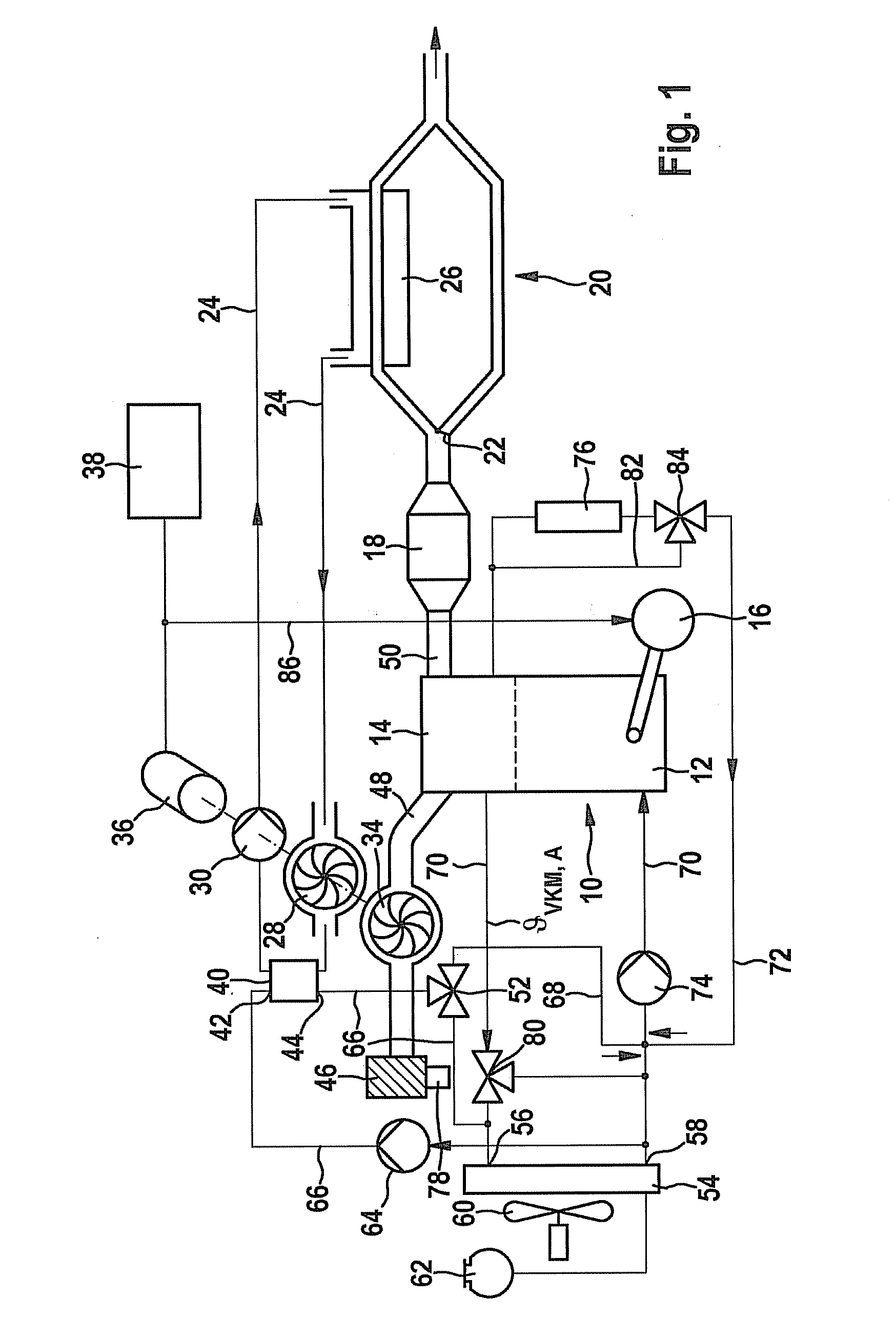Device for utilizing waste heat
a waste heat and device technology, applied in steam engine plants, mechanical equipment, machines/engines, etc., can solve the problem of the lowest available temperature level in the coupling heat exchanger (condenser), and achieve the effect of shortening the warm-up phase reducing the cooling of the internal combustion engine, and saving weight and installation spa
- Summary
- Abstract
- Description
- Claims
- Application Information
AI Technical Summary
Benefits of technology
Problems solved by technology
Method used
Image
Examples
Embodiment Construction
[0009]The representation in the figure shows in greater detail that an internal combustion engine 10 includes an engine block 12. A cylinder head 14 is located on engine block 12; a starter / generator 16 is flange-mounted on the engine block in the area of the crank shaft which is not shown in the drawing. Within an exhaust system 20, internal combustion engine 10 includes an exhaust gas catalytic converter 18, a heat exchanger 26 being formed in one branch in exhaust system 20. Heat exchanger 26 is part of a circuit 24 for a working medium, the circuit being in particular a steam circuit according to the approach according to the present invention. Apart from heat exchanger 26, circuit 24 includes a device for utilizing waste heat, which includes an expansion machine 28 and a pump 30. Furthermore, the working medium flows through a coupling heat exchanger 40, i.e., a condenser, within circuit 24, i.e., the steam in steam circuit 24. The working medium of circuit 24, i.e., the steam,...
PUM
 Login to View More
Login to View More Abstract
Description
Claims
Application Information
 Login to View More
Login to View More - R&D
- Intellectual Property
- Life Sciences
- Materials
- Tech Scout
- Unparalleled Data Quality
- Higher Quality Content
- 60% Fewer Hallucinations
Browse by: Latest US Patents, China's latest patents, Technical Efficacy Thesaurus, Application Domain, Technology Topic, Popular Technical Reports.
© 2025 PatSnap. All rights reserved.Legal|Privacy policy|Modern Slavery Act Transparency Statement|Sitemap|About US| Contact US: help@patsnap.com



